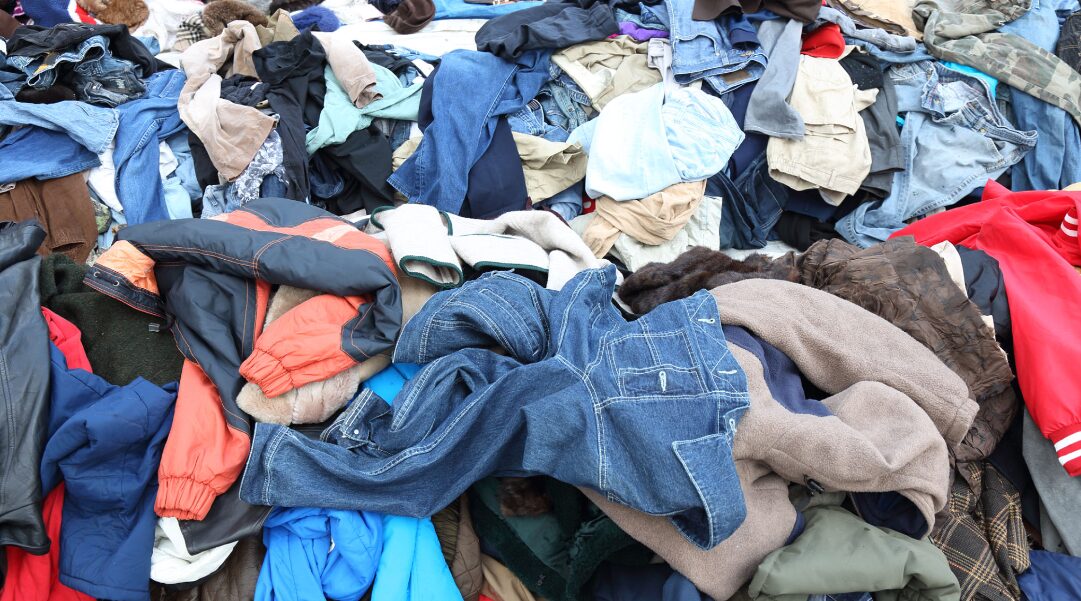From Trash to Treasure: Tackling Textile Waste for a Sustainable Future
In the Western world, the common practice of donating old clothes to charity has long been celebrated as an act of goodwill. However, torn and damaged garments often end up in trash bags, eventually finding their way to landfills. This is where the problem begins—textile pollution. Garments have become the second-largest source of toxic waste globally, contributing to environmental degradation and greenhouse gas emissions. As responsible consumers, we hold the power to reduce textile waste by supporting sustainable practices and making conscious choices.
The Hidden Impact of Textile Waste
The numbers are alarming. According to the Environmental Protection Agency (EPA), over 10 million tons of used clothing are sent to landfills annually, while only 2.63 million tons are recycled. Another 3.14 million tons are burned for energy recovery. This cycle creates a significant environmental burden that extends far beyond the surface.
Many people are unaware that discarded textiles take years, even decades, to decompose. Here’s why textile waste is so detrimental:
- Takes Up Space: Clothing in landfills occupies valuable space, creating long-term waste management issues.
- Releases Greenhouse Gases: As textiles decompose, they emit methane, a potent greenhouse gas.
- Consumes Resources: The production of new fabrics demands excessive water, fertilizers, and pesticides, exacerbating environmental damage.
- Pollutes Water and Soil: Fabrics treated with chemicals and dyes leach toxins into ecosystems, contaminating water sources and soil.
- Synthetic Fiber Challenges: Materials like polyester, nylon, rayon, and acrylic are non-biodegradable and release harmful microplastics into the environment.
The impact extends to human health as well. Synthetic fibers, particularly polyester (commonly used in Lycra and Dacron), are linked to chronic illnesses such as cancer and respiratory diseases. Additionally, their manufacturing processes discharge pollutants into water and air, compounding ecological harm.
A Call to Action: Rethinking Textile Waste
Change begins with awareness and action. The solution lies in recycling and repurposing. With over 90% of discarded clothing being recyclable, the potential for positive impact is immense. Here are some innovative ways textiles can be reprocessed:
- Wadding for pillows and cushions
- Paper products, including currency notes
- Filling for carpets and sports fields
- Linings for jewelry boxes and other products
Additionally, thrift shopping plays a crucial role. Over 70% of people globally wear second-hand clothes, reducing the demand for new garments and extending the life cycle of textiles.
Why Recycling Matters
Recycling clothing goes beyond individual benefits—it addresses the root causes of textile pollution and creates ripple effects across society and the environment. Here’s how:
- Reduces Landfill Waste: Recycling diverts textiles from landfills, saving space and reducing methane emissions.
- Creates Jobs: The recycling industry generates employment opportunities in sorting, processing, and resale.
- Supports Ecosystems: Minimizing textile waste lessens pollution, preserving water and soil health.
- Saves Taxpayer Money: Reducing landfill contributions lowers waste management costs.
- Encourages a Circular Economy: By reusing materials, we create a sustainable cycle that limits the need for new resources.
Most importantly, it shifts our mindset. Recycling is not just about cans, bottles, or paper—it’s about apparel and textiles too. Every effort counts, no matter how small. When we see clothing not as disposable but as valuable, we transform waste into opportunity.
How You Can Help
Change starts with simple steps:
- Donate and Swap: Instead of discarding, donate wearable clothing to local charities or participate in clothing swaps.
- Repurpose Creatively: Turn old clothes into rags, quilts, or DIY projects.
- Support Sustainable Brands: Choose companies that prioritize eco-friendly materials and ethical practices.
- Shop Second-Hand: Embrace thrift shopping to reduce demand for fast fashion.
- Spread Awareness: Educate others about the importance of recycling textiles and its impact on the planet.
Conclusion: A Sustainable Future Is Within Reach
Textile waste is not just an environmental issue—it’s an opportunity to rethink our relationship with clothing. By choosing to recycle, repurpose, and shop responsibly, we can drastically reduce the harmful effects of textile pollution. Together, we can turn discarded garments into resources, preserving the planet for future generations.
The next time you clean out your wardrobe, ask yourself: How can these clothes have a second life? The answer might surprise you—and it could make all the difference.


Leave a Reply